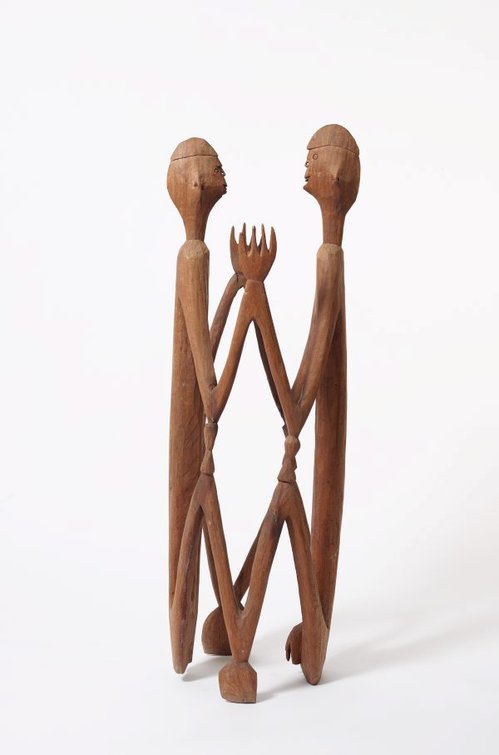-
Details
- Place where the work was made
-
As-Atat village
→
Sawa Erma District
→
Asmat Regency
→
Papua Province
→
West Papua Region
→
Indonesia
- Cultural origin
- Asmat people
- Date
- mid 20th century
- Media category
- Arms & armour
- Materials used
- wood, earth pigments
- Dimensions
- 158.0 x 58.0 cm
- Signature & date
Not signed. Not dated.
- Credit
- Gift of Todd Barlin 2020. Donated through the Australian Government's Cultural Gifts Program
- Location
- Not on display
- Accession number
- 181.2020
- Artist information
-
Asmat people
Works in the collection
- Share
-
-
About
War shields – known as 'jamasj' among the Asmat people who reside in present-day Papua Province of Indonesia – were traditionally used in battle to protect warriors from arrows and spears. Carved representations of ancestors, which cover the face of the shield, bestows upon the carrier the strength, courage and determination to fight in battle. Enemies would be so intimidated by the painted images on the shield, they would flee in terror from the advancing warriors. Although all could see the shields, only initiated men could understand their deepest meanings.
Only certain artists may carve motifs on the shields, according to the will of ancestral spirits. The Asmat hew shields from the roots or trunks of mangrove trees, which grow in abundance in the estuarine regions. The soft wood is easily carved using stone, bone and shell, which were the only tools available in pre-contact times. In many Asmat regions, white paint, called 'mbi', is sourced from seashells which are roasted and ground, while red paint – 'wasah' – is obtained from mud which is burned to give the colour red, or 'esakam'.
Shields from the north western region of Asmat territory are oval in shape with a pointed 'head'. The head often displays incised decorations which might represent rays, turtles or cassowaries, thought to be manifestations of an ancestor and their soul. The central section is rich in detail and carved in high relief, with the lower section undecorated.
This shield was collected by Todd Barlin in the late 1980s in As-Atat village, which lies on a tributary of the remote Upper Pomatsj River.
For further reading see Tobias Schneebaum, 'The use and significance of colour in Asmat', Pacific Arts Newsletter, January 1985, pp 22-24; Dirk Smidt (ed), 'Asmat art: woodcarvings of Southwest New Guinea', George Braziller, 1993
